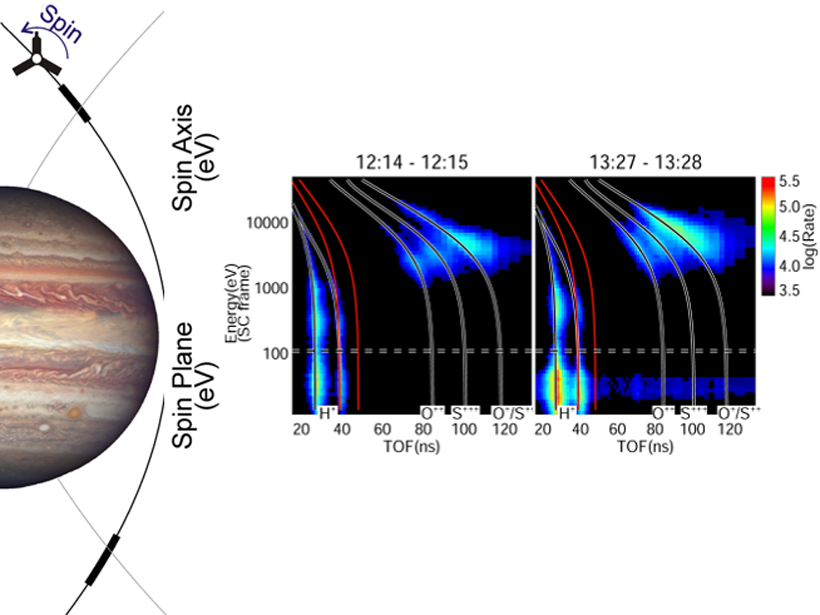Source: Geophysical Research Letters
The ion sensor on NASA’s Juno spacecraft has made the first in situ observations in the upper portion of the Jupiter ionosphere. Valek et al. [2019] reveal, rather surprisingly, bands of cold ionospheric protons in both the Northern and Southern Hemispheres, in a region just equatorward of the auroral oval on Jupiter, with energies below an electron volt.
Even more surprisingly, these cold protons are seen to coincide with populations of hot oxygen and sulfur ions with energies of one to ten thousand electron volts, precipitating from Jupiter’s inner magnetosphere. These hot, heavy ions are believed to heat the upper ionosphere, thereby raising the height of the cold protons and making them observable on Juno.
These unexpected observations shed important lights on how the dynamics of Jupiter’s ionosphere and magnetosphere are coupled together.
Citation: Valek, P. W., Allegrini, F., Bagenal, F., Bolton, S. J., Connerney, J. E. P., Ebert, R. W., et al. [2019]. Jovian high‐latitude ionospheric ions: Juno in situ observations. Geophysical Research Letters, 46, 8663– 8670. https://doi.org/10.1029/2019GL084146
—Andrew Yau, Editor, Geophysical Research Letters
Text © 2019. The authors. CC BY-NC-ND 3.0
Except where otherwise noted, images are subject to copyright. Any reuse without express permission from the copyright owner is prohibited.

